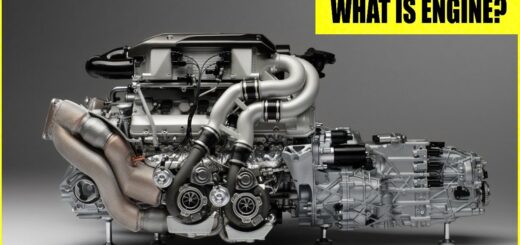How does Electric Cars Work? – [Complete Guide]
![How does Electric Cars Work? - [Complete Guide]](https://engineeringlearn.com/wp-content/uploads/2023/03/How-does-Electric-Cars-Work-1024x539.jpg)
Electric Car Introduction:
How does Electric Cars Work? – [Complete Guide]: – Driving an electric car is direct and will feel generally recognizable to anybody used to petroleum or diesel vehicles. Notwithstanding, the inner workings of an electric vehicle (EV) are altogether different from a conventional car just like the ‘refueling’ process. Remember that your electric car has a maximum charging rate that is static, so you probably won’t save any time assuming you fuel your battery at a high-power charging station.
What are Electric Cars?
An Electric car (EV) is basically an automatic vehicle with an electric motor fueling it. A fully electric car doesn’t run on or have a petroleum or diesel engine. With an Electric car, when you place the car in ‘drive’ mode, the vehicle speeds up very much like an automatic vehicle. They are in every case fully automatic cars.
Exactly when the accelerator is pressed, power is moved from the battery to the electric engine. The motor is powered bringing about the drive shafts and turning the wheels. At the point when the car slows down, the car begins to decelerate and the motor turns into an alternator, generating power. This power is then sent once more into the battery. Like gas cars, EVs can only go a limited number of miles before they should be refueled.
Electric cars function on a very basic level fundamentally in comparison to traditional cars. Internal combustion engines have loads of moving parts and keeping in mind that EVs have their own complexities, they’re considerably more digital than mechanical.
How do Electric Cars Work?
An electric car powers its wheels utilizing electric motors, not excessively unlike the ones you’d track down in a radio-controlled car. Electric car work on the principle of transforming electric energy into mechanical energy, which is further used to obtain kinetic energy and empower motion in a car.
EVs include an electric engine rather than a conventional fuel engine. Thus, electric energy replaces conventional fuel (petrol/diesel). The electric engine changes over the electric charge into mechanical energy.
Electric engines transform electricity into motion by creating a rotating magnetic field. A cylinder called the stator contains firmly tightly-wound copper wires, which the alternating current coming from the inverter goes through. Since the current alternates, the north and south poles of these magnetic fields switch to and fro. By running various circuits at somewhat unique electrical frequencies, in general, the magnetic field rotates.
Consider this, a car that runs on conventional fuel (petroleum/diesel) contains essential components, for example, engine, transmission, fuel tank, and so on. By and large, coming to an electric car the engine is replaced or supplanted by an electric motor, and the fuel tank is replaced by the battery pack. Transmission remains the same, albeit all-electric vehicles have a less complex design of gears.
Below are Points to Understand How an Electric Car Works
- The battery pack plays an important role as it stores electrical energy when you charge the battery. Later, energy which is stored is utilized to power the electric motor and different accessories/parts.
- A controller or regulator manages the progression of electrical energy to the engine.
- The controller or regulator modulates the progression of electricity contingent upon the signals received from the accelerator pedal.
- The electric engine receives power from the battery and converts it into mechanical energy.
- The transmission transfers the mechanical energy from the motor to drive the wheels.
- Couple of EVs produce regenerative braking energy. The energy produced during the slowing down or deceleration of the vehicle is sent back to the battery pack.
- The battery pack can be charged through the charging port. The onboard charger converts AC over completely to DC.
- You can charge the battery by connecting or associating an external power source to the vehicle’s charging port.
- An electric car is additionally equipped with an auxiliary battery to power the car’s accessories and other equipment.
- The auxiliary battery is recharged by means of a DC-to-DC convertor which converts over high-voltage current from the battery pack to low-voltage current.
- With no internal combustion engine, electric cars are altogether quieter than gas or diesel-powered vehicles.
- With fewer mechanical parts and a simpler design, electric cars don’t run into a considerable lot of the mechanical issues encountered by gas-and diesel-powered vehicles.
- Most electric car drivers will require close to 40 hours to charge a fully empty battery in the event that they are utilizing a three-prong plug.
- Harsh cold temperatures can definitely add to your charging time, while scorching hot weather conditions can influence the thermal management and in general productivity of your vehicle because of higher chemical reactions in lithium-ion batteries.
Conclusion
Buying an electric car is a colossal venture. Before you jump into test drive mode, take some time to consider how electric cars work and assume an EV is right for you. Battery electric vehicles, or all-electric vehicles, depend altogether on electricity stored in the battery pack to drive the wheels, in contrast to internal combustion engine cars that run on fossil fuels. At the point when a conventionally powered car runs out of its fuel, the owner needs to stop near a gas or service station to fill up the tank. Interestingly, electric car drivers can charge the battery utilizing an external electricity source. Plug-in hybrid electric vehicles house a gasoline or diesel engine as well as an electric motor, however, the owners charge the battery through a similar method.
Since an electric motor can deliver its maximum torque at very low speeds, electric cars utilize one-speed transmission, conversely, with conventional cars that need multiple gears. A traditional engine makes its power output at a narrow band of engine speed, such countless gears are expected to keep the engine speed in the range of its best efficiency. Energy suppliers offer EV-centered taxes that can set aside your cash while charging. Many are dual-rate – electricity is least expensive short-term when your EV is charging – or single-rate, where a similar rate is paid over the course of the day, yet discounted on the off chance that you are an EV owner.
Content Source: – ackodrive, lemonade
Image Source: – afdc.energy













